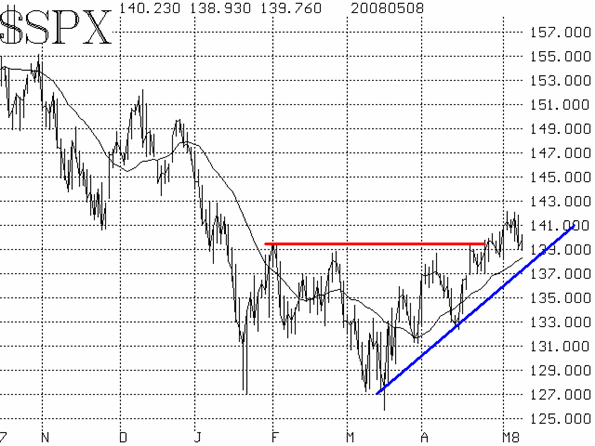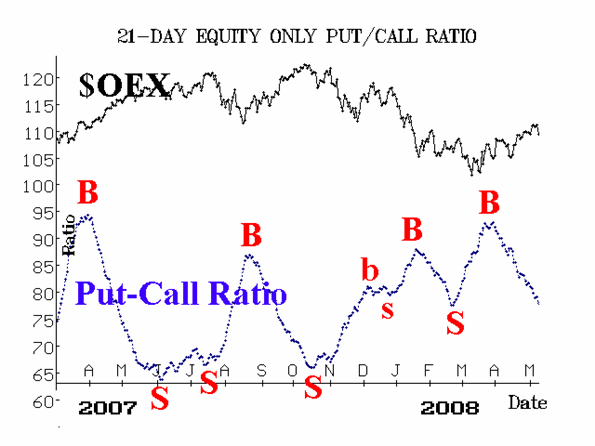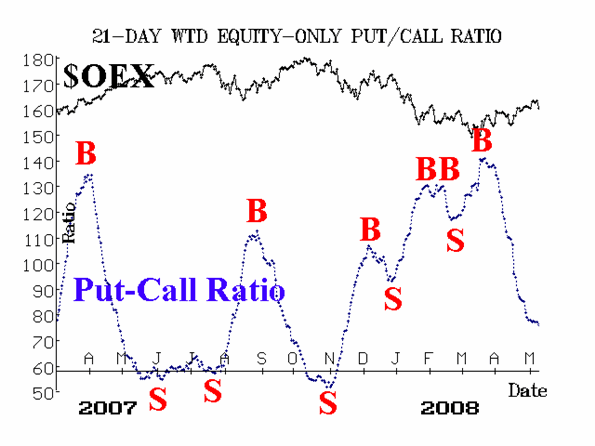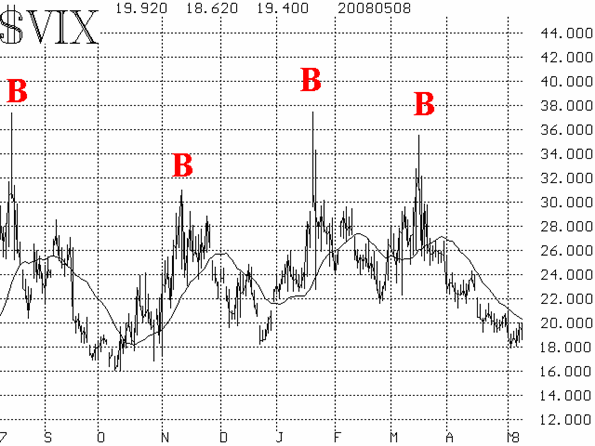| The McMillan Options Strategist Weekly |
| By Lawrence G. McMillan |
Published
05/9/2008
|
Options
|
Unrated
|
|
|
|
The McMillan Options Strategist Weekly
The bulls were having things pretty much their own way, after last Thursday's big breakout to the upside, decisively over $SPX 1400. Moreover, strong gains were registered this past Tuesday, as the market reversed from down to up on a very strong day ($SPX was up 21, from low to high). But then the wheels came loose. First, a daylong decline on Wednesday took the averages down sharply. Then, today, there was a weak close. There's no getting around the fact that this bearishness of the past two days -- abetted by a sharply rising bond market (indicative of asset allocators moving out of stocks and into bonds) -- is putting extreme pressure on the bullish case.

We have been saying that it would be negative if $SPX closed below 1390, for that would violate the 1390-1400 support area. It closed at 1392 on Wednesday. However, perhaps what's more important is the rising trend line of $SPX and not the well-publicized 1400 support area (see $SPX chart, figure 1). The market has ways of confusing the majority, especially when the majority is all looking at the same thing (i.e., $SPX support at 1400). So, we wouldn't say that the $SPX chart has lost its bullishness unless $SPX were to violate that trend and close below its 20-day moving average -- both of which are near 1380 at the present time.
The equity-only put-call ratios remain bullish, as they continue to decline on their charts (Figures 2 and 3). The rate of decline has slowed for the equity-only weighted ratio and for the QQQQ weighted ratio, but that alone does not constitute a sell signal.

Market breadth has never been really strong all year. Then, on Wednesday, breadth readings were poor, breadth has now given new sell signals.

The volatility indices ($VIX and $VXO) remain in steep downtrends, and that is bullish. This is true, even though $VIX jumped higher on Wednesday (see Figure 4). As long as $VIX is below its declining 20-day moving average, it will be considered bullish. In fact, it would likely have to close above 21 in order to "officially" reverse the current bullish downtrend.

So, in summary, Wednesday's sharp decline and Thursday's poor close have put the bulls on notice. However, the recent uptrend is still intact at this point. We would change our opinion to negative if a) $VIX closed above 21, and/or b) the equity-only put-call ratios rolled over to sell signals, and/or c) $SPX closed below 1380. Those things are possible, of course, but not certain.
Lawrence G. McMillan is the author of two best selling books on options, including Options as a Strategic Investment, recognized as essential resources for any serious option trader's library.
|